La Cucina Collaborativa has been a co-design process that created circular solutions against food waste together with the diners, volunteers, food donors and public authorities of a charitable food donation system in the city of Reggio Emilia, Italy.
The project was funded under the call: Cross-KIC New European Bauhaus Call for Proposals for Citizen Engagement (https://www.climate-kic.org/wp-content/uploads/2021/06/XKIC-NEB-Call-for-Proposals_Citizen-Engagement.pdf) published in 2021.
“La Cucina Collaborativa” (The Collaborative Kitchen, in English) (CK) has been a citizen engagement and co-design project aimed to enhance the circularity of the food system in the Municipality of Reggio Emilia.
The recognition that circularity challenges intertwine environmental, social and cultural factors was central to the project. La Cucina Collaborativa explored this complexity within the thriving Reggio Emilia food donation system. Here, the project became a platform to engage stakeholders through a co-design process ultimately intended to frame opportunities and ideas for solutions against food waste.
Active engagement relied at the core of the project’s approach. In fact, “La Cucina Collaborativa” involved in co-design almost 100 individuals of the investigated food donation system, including the low-income individuals who benefit from Caritas food distribution centers or canteens (i.e., ‘the beneficiaries’ or “the diners”); the organisations donating food (i.e., the food donors); Caritas staff and volunteers; third sector local representatives; and the city/region public servants and street-level bureaucrats.
“La Cucina Collaborativa” experimented a replicable and scalable co-creation/co-design approach and methodology to explore a complex issue area while moving from the individual to the systemic perspective. Firstly, the engagement probed into human needs and behaviours that characterise the delicate experience of food donation. Then, it discussed about circular and inclusive solutions through incorporating these elements with large-scale feasibility issues and development opportunities.
Participants individuated unaddressed needs and design opportunity areas. Among them, co-design served to select and prototype a data-driven system for smart logistics called “the Smart Food Hub”, for reducing food waste while addressing beneficiaries/diners food needs and improving communication in the food donation system
Please highlight how the project can be exemplary in this context
The EU Waste Framework Directive highlights that preventing and reusing food waste are the most effective interventions in the waste hierarchy. Moreover, sustainability goals cannot be disconnected from social inclusion and understimate people’s role in the green transition. “La Cucina Collaborativa” (CK) addressed this issue connecting to food insecurity, through developing public awareness about the Caritas donation system’s nature, characteristics, resources, and actions. This raised the question of an extended circularity of a territorial food system that considers the fight against food loss and waste, which is also an opportunity to build social inclusion, increase communities’ resilience, create fair labour opportunities, and enable social capital. With this in mind, one of the workshops of the CK’s process aimed to connect Caritas and its food donors, as a first in the relation between these subjects. It revealed areas of attainable mutual contribution, and what emerged is that this contribution could regard much more than only food: e.g., professional training, cultural events, volunteering opportunities, etc. The CK fulfilled the goal of creating public awareness about concrete possible connections between a system in need of food/resources and the territorial systems that own these assets and can actively support. The original contribution of the project relied on creating the venue for actors to gather in the proactive attempt to design the contextual and desirable possibilities of connecting these worlds. Past policies linked these two worlds mechanically or instrumentally by incentivising companies to donate their surplus through fiscal benefits. The CK, however, piloted an approach for reframing food waste, not as a matter of food surplus disposal — where low-income people become the receptacle of production system excess — but a conscious and collective endeavour toward the ethical principle of making nutrition and resources equally accessible.
Please highlight how the project can be exemplary in this context
Food is intimate, cultural and subject to personal taste. Similarly, the experiences of donating and receiving charitable donations have emotional and aesthetic elements. Holding the idea that the process of matching the supply of and demand for excess food is more than a technical and logistical one, the CK embraced co-design as the core of its engagement approach. In terms of aesthetics and quality of experience, the CK developed an ideation process toward system-level circular solutions where design ideas against food waste also improve personal experiences in the system of food donation. The CK's involvement process worked closely with Caritas' beneficiaries/diners and volunteers. Through co-design their perspectives were incorporated to reframe the concept of food donation in the final circular ideas. Pre-engagement activities (e.g., interviews), workshops and prototyping were explicitly dedicated to this scope.
Through pre-engagement emerged that beneficiaries perceive to have no agency in the food donation process. In a first workshop, by producing tailor-made co-design canvases/tools they were asked to express their nutritional needs and eating habits, and ideas to rethink food donation. The beneficiaries got slowly engaged, and many unmet needs emerged. For example, the multi-cultural background of the people involved emerged in food preferences. Participants questioned the menu variety and expressed the desire of integrating new tastes from their countries of origin.Finally, prototyping helped explore volunteers' aesthetic/experiential aspects related to the use of a data-driven "Smart Food Hub" system, the final idea. Rapid prototyping made clear that implementing a data-driven system for food logistics would have overlooked the volunteer's knowledge. Moreover, it was possible to discuss the effects linked to the introduction of a highly digitalised system in food donation, against the strong relational dimension that characterise it.
Please highlight how the project can be exemplary in this context
Citizen engagement was a core goal of “La Cucina Collaborativa” (CK). The project aimed to involve as many actors as possible at different levels of the food donation system.
In particular, it looked at low-income families and individuals affected by food insecurity as the primary population to be engaged in the process (i.e., those who regularly benefit from the Caritas food donation system and services).
This involvement had to be designed to make it meaningful for these subjects and overcome the multiple inevitable barriers to participation. Such barriers include language and literacy, as well as the complicated and delicate relation these individuals have with food donation and nutrition. The joint work of Design Policy Lab and Caritas crafted this involvement by leveraging on the capacity of the former of creating “ad hoc” co-design tools (e.g., visual canvases); and the knowledge and authority as a gatekeeper of the latter.
Despite all the effort, while it partly remained below the initial expectations, the engagement of this population was a success, also considering the limited time frame. In the pre-engagement activities and a first workshop, several beneficiaries successfully got involved.
This involvement was not mere tokenism but purposely intended to detect and isolate actionable insights within the food donation system. According to the process structure, these insights became the milestones upon which the other co-design steps were built (workshop 2, workshop 3).
In this sense, the CK was exemplary in opening up to lay-persons and fragile populations the ideation process of circular solutions, which would typically remain under the domain of technical or business expertise. The CK’s original principle was to co-design ideas of circular solutions not directly with fragile populations but by involving them in improving a familiar context that they care about and that lent itself to circularity.
Please highlight how this approach can be exemplary
“La Cucina Collaborativa” was initially selected for funding by EIT Food because of its capacity to combine the three core values of the New European Bauhaus initiative (which were stated in the funding call).
In its concrete realisation, the CK addressed sustainability and circularity by developing circular ideas that envision actionable and desirable ways to reduce food waste in territorial food systems by matching food surplus with the needs of a local donation system, and of those who are involved.
The CK included the aesthetics and quality of experience of beneficiaries and volunteers in developing circular ideas by engaging citizens and subjects in the early stages of this process. The co-design tools specifically realised for probing into this experience intended to leverage the aesthetic side of food donation, considering the meaning of food and nutrition for the beneficiaries.
The proactive engagement fueled an individual-to-system approach throughout three main steps (i.e., workshops). The outputs of co-design were carried on throughout the project — each phase informing the next — and finally incorporated in the final ideas. In light of this approach/methodology, it should be self-evident that the dimension of inclusion was also primarily addressed and attained by the CK.
The CK project developed four design opportunity areas for actionable circular solutions that could prioritise the needs of low-income individuals and households in Reggio Emilia while addressing the circularity of territorial food systems.
These needs emerged in four concrete design opportunity areas as results of the process:
- Improving the efficiency of the food donation system through smart logistics, including traceability of products and automated decision making for better meeting dietary needs and personal preferences.
- Improving the experience of managing and participating in food donation through more seamless communication and organisation between Caritas, volunteers and donors.
- Enhancing the ability to attract more donors and volunteers into the system and showcasing the impact of food donation on the community.
- using food as a starting point to better address people’s holistic needs, including developing their innate human talents and creating opportunities to realise their potential.
Each design opportunity area was further explored during the CK’s process and of the ideas generated were then combined into a concept for prototyping, the Smart Food Hub.
The concept was designed to showcase critical components of the future food donation system, and to understand the desirability of the possible future experience from the perspectives of people accessing Caritas food services; Caritas staff; and volunteers. The Smart Food Hub concept demonstrates how digital technologies and infrastructure might work at both the food donation system and the individual levels (for people accessing food services, volunteers, staff and donors).
The goal of the project was to develop high-level concepts that might be taken up and further developed by the local network of stakeholders.
Please also explain the benefits that derived from their involvement.
La Cucina Collaborativa was designed since the start as a citizen engagement process to design replicable circular solutions. The project engaged with 141 people over ten weeks.
The engagement process included different formats of events/workshops, linked and dependent on the type of actors involved and at that given stage of involvement in the overall methodology.
These formats included: a kick-off event, the pre-engagement and field research activities, three half-day of co-design workshops, one prototyping session and one closing event.
Specifically, La Cucina Collaborativa engaged 35 beneficiaries/diners of the Caritas food donation system (13 Italians and 22 foreigners). The project engaged foreign beneficiaries from Central and North Africa, Central and Eastern Europe, and South America. Of the beneficiaries involved, 12 (35%) were over 65, 17 were between 45 and 64 (44%), and 7 (21%) were under 44.
The various events of the process were also communicated through the Design Policy Lab social media (e.g., DPL streamed the events online) and the official website.
The project received press coverage from Gazzetta di Reggio, the local daily newspaper of Reggio Emilia, and in La Libertà, the weekly newspaper of the Reggio Emilia - Guastalla diocese. Caritas also shared press releases about the events on its website, Chiostri di San Pietro and by other participating organisations, such as Centro Servizi per Voluntario - Emilia.
Thanks to this broad involvement, a wide and participatory social learning process took place, which might be considered the most important result of this rapid intervention. This process generated a new and important path for renewing Caritas’s strategy in the short-to-medium term, through an renewed network of stakeholders of the territory.
Raising levels of food insecurity and malnutrition are among the most relevant urban challenges associated with the impacts of the COVID-19 pandemic in European cities. Moreover, cities, as economic and production centres, are places where the majority of waste is produced. At the same time, as hubs of resources, capital and data, they are able to undertake innovation processes towards sustainable ways of living and the circular economy.
The project “La Cucina Collaborativa” worked at the intersection of these challenges. It aimed to increase the circularity of the food donation system, through a process of co-design that involves a very extensive territorial network of key players, called upon to imagine solutions that rethink the system of food donation in the Reggio Emilia area, not only to reduce waste, but also to support concrete processes of inclusion of people in the community.
“La Cucina Collaborativa” used co-design as an approach and method to transform the food donation and distribution system, not only to improve circularity but also to contribute to improved health outcomes for beneficiaries. Accordingly, the project contributed to a deeper understanding of the operations of Caritas and the broader context of the Reggio Emilia food system, including the policies that govern and stimulate food donation. The project also served as an opportunity to strengthen the stakeholder network, including them in a strategic conversation about the future of food donation and circularity in Reggio Emilia, and reflecting on shared values underpinning food donation.
La Cucina Collaborativa also provided through desk and field research activities a first data repository which integrates different sources (qualitative and quantitative) as a first attempt of systematising some data baselines that will be necessary to evaluate the possible impact of the future actions and help in assessing the development path for future product-service solutions.
Compared to mainstream practices in the field, the project was innovative on two levels. On the level of content, it experimentally built a bridge between two dimensions often disjointed: the circular economy/sustainability dimension and the social inclusion dimension. The novelty of this framing was noted also by stakeholders in the final public event. On the level of methodology, CK offered a replicable approach, that nonetheless remained customisable to different contexts and needs. Accordingly, the co-design methods/tools were designed ad hoc for each co-design moment.
Please provide clear documentation, communication of methodology and principles in this context.
Replicating the La Cucina Collaborativa process is possible for the other networks of organisations involved in the food donation system, and the project website provides an overview of the process for any group. Scaling up of the La Cucina Collaborativa might be developed through a three-stage process that could address the further prosecution of the project in other contexts:
- understanding how to source funding for the further design, business case development and implementation of the infrastructures - human, organisational and technical - needed to realise the concepts that emerged in the process
- implementing a campaign to engage new collaborators/volunteers that might intervene in different part of the actual process;
- promulgating the concept beyond the Reggio Emilia context, leveraging Caritas’s strong Italian, European and global reach as a networked organisation.
Each local organisation would need to adapt the concept for its own context; however, the ability to replicate the concept across Caritas’s network would strengthen a business case for funding, ensuring that the benefit of the investment - particularly in technology - would be felt far beyond Reggio Emilia.
All these considerations have a clear consequence: to develop a strategy that is based on how to scale up through a scaling out approach of the intervention model (with all the competencies, processes, services and technologies involved).
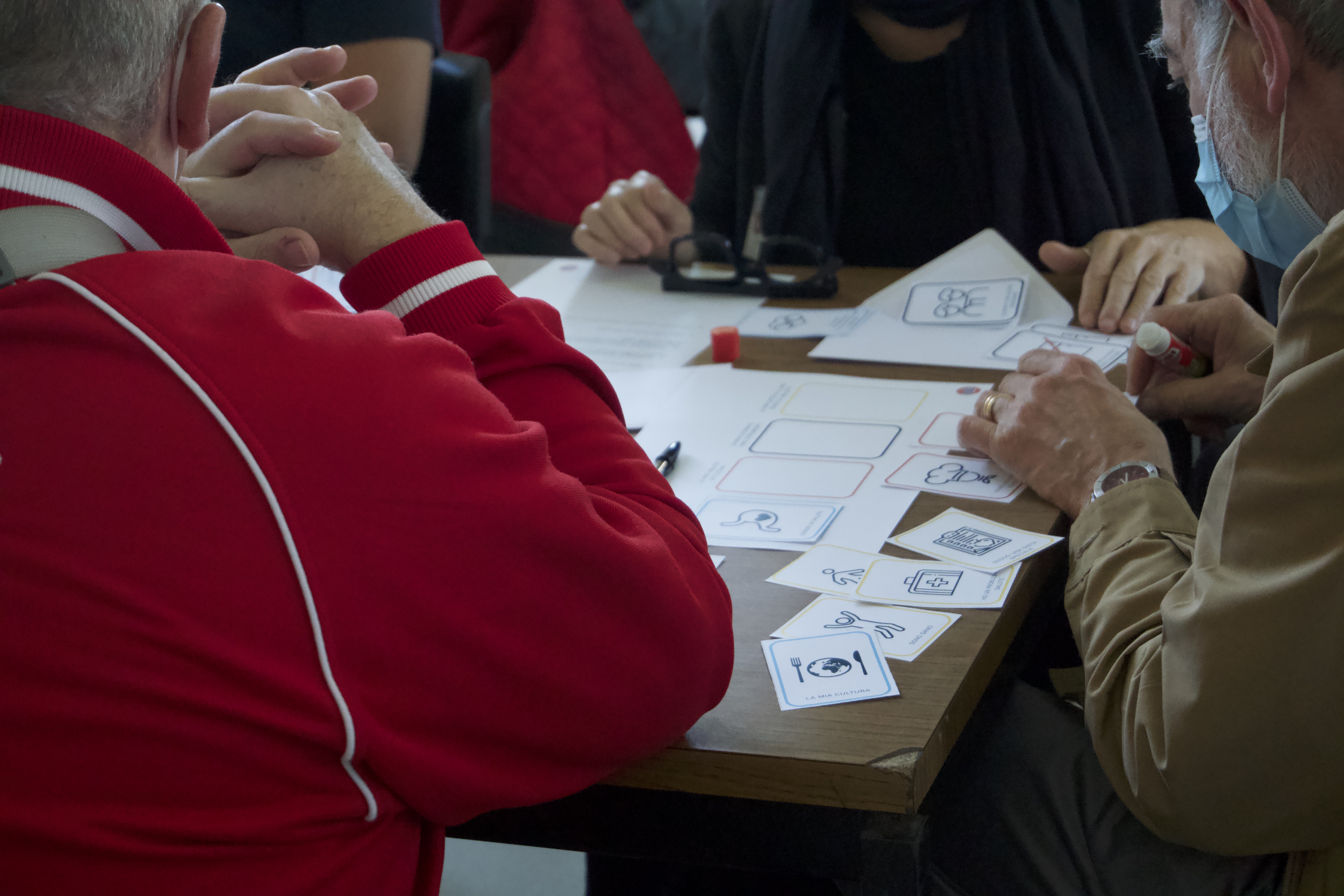
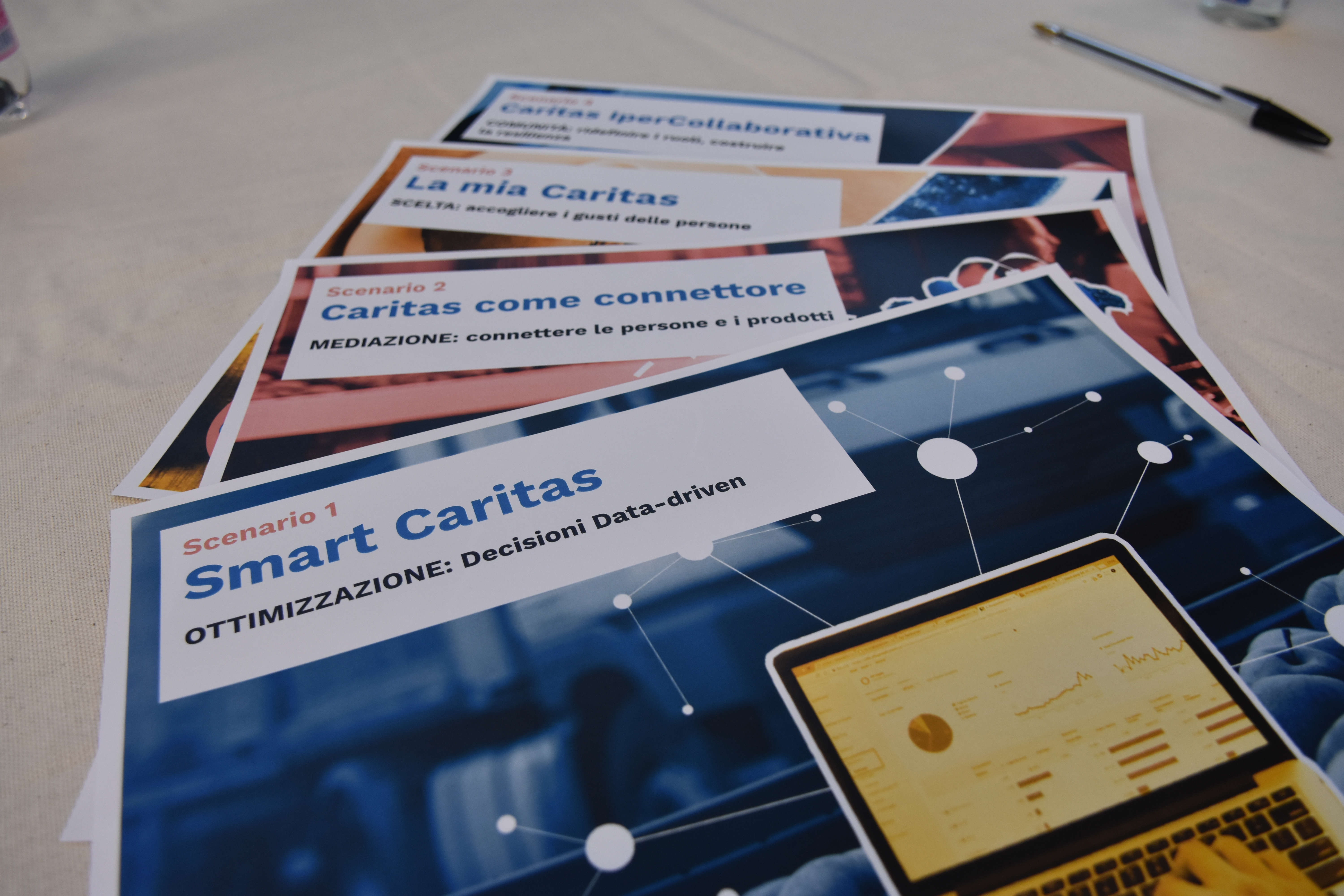
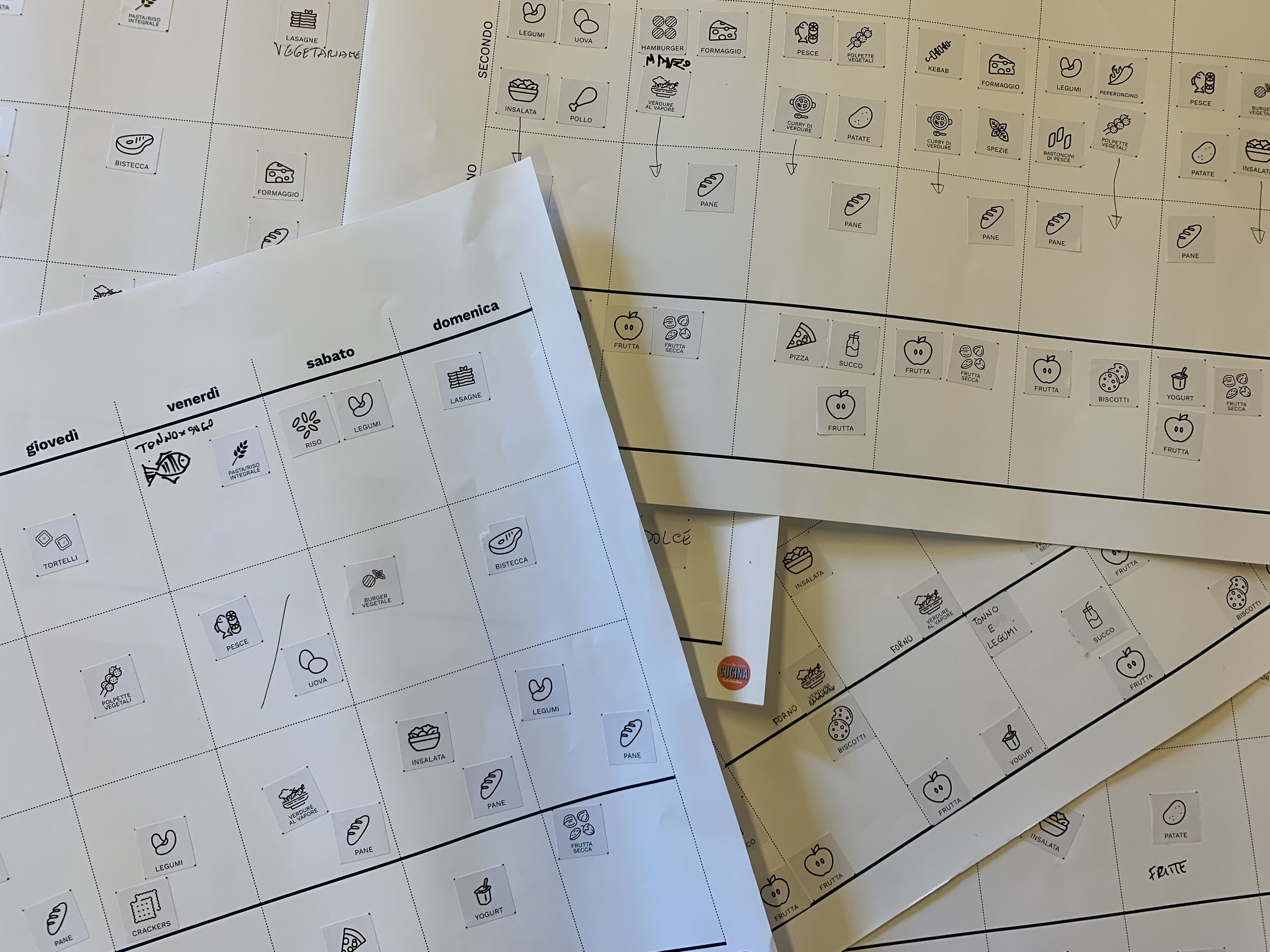
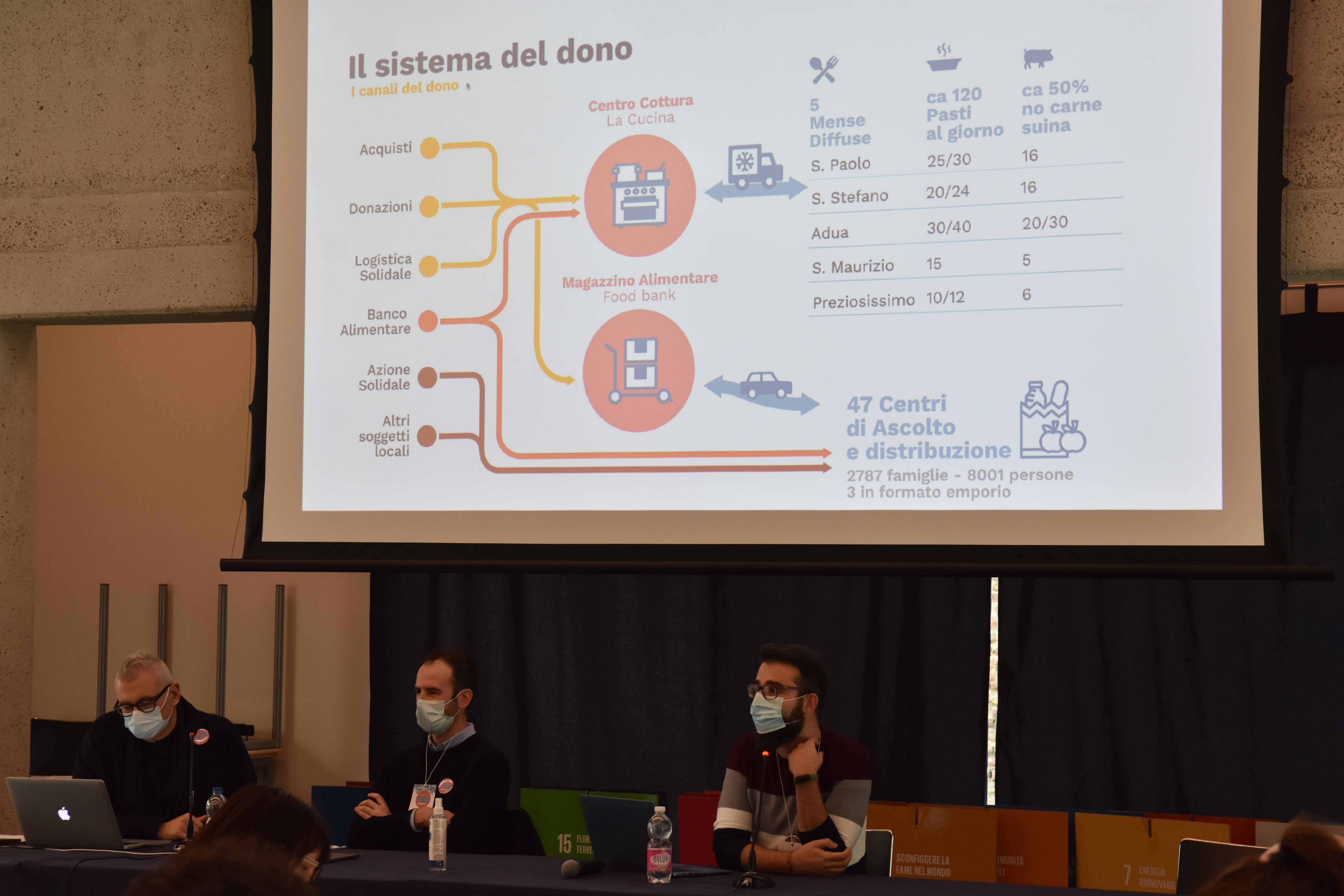
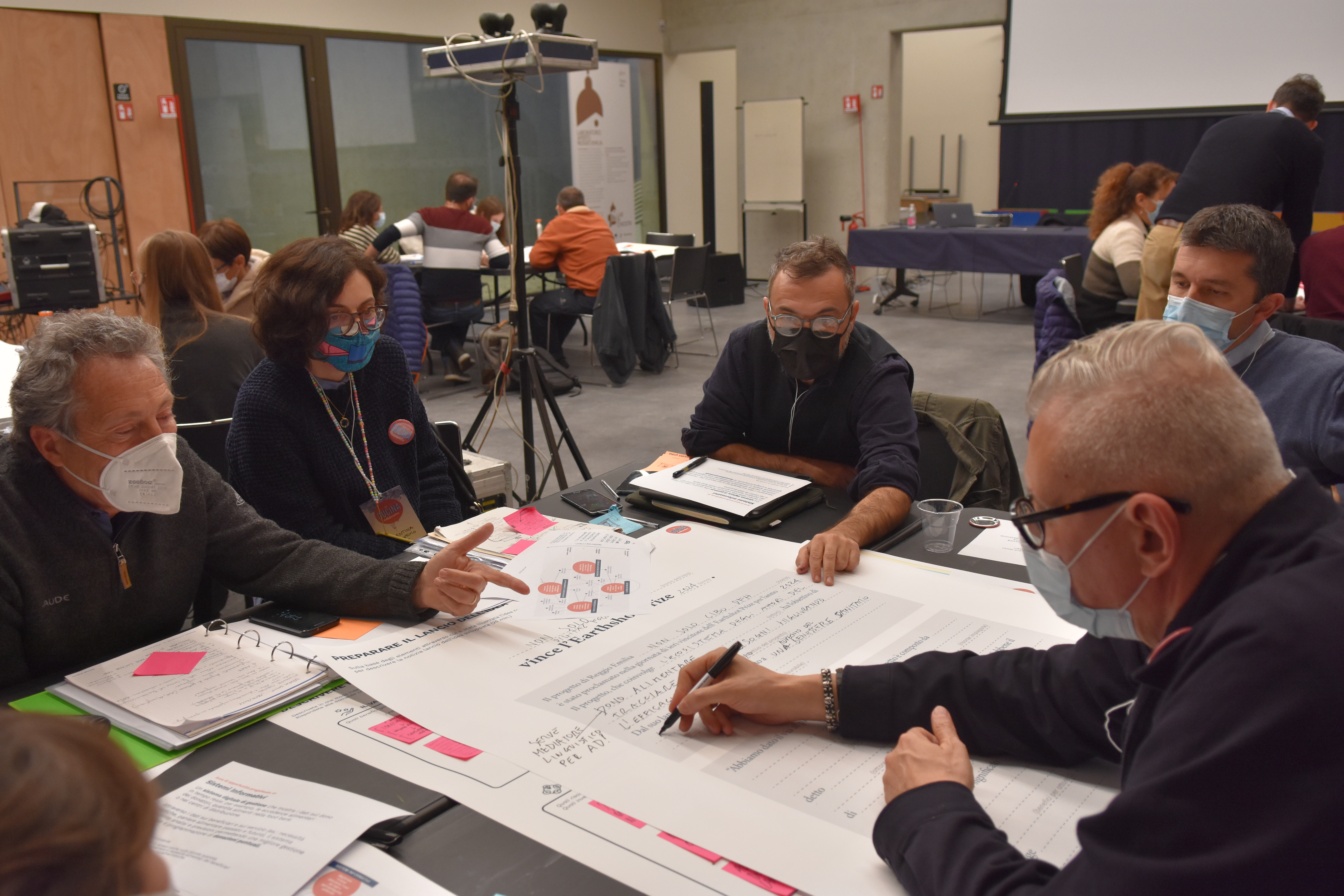
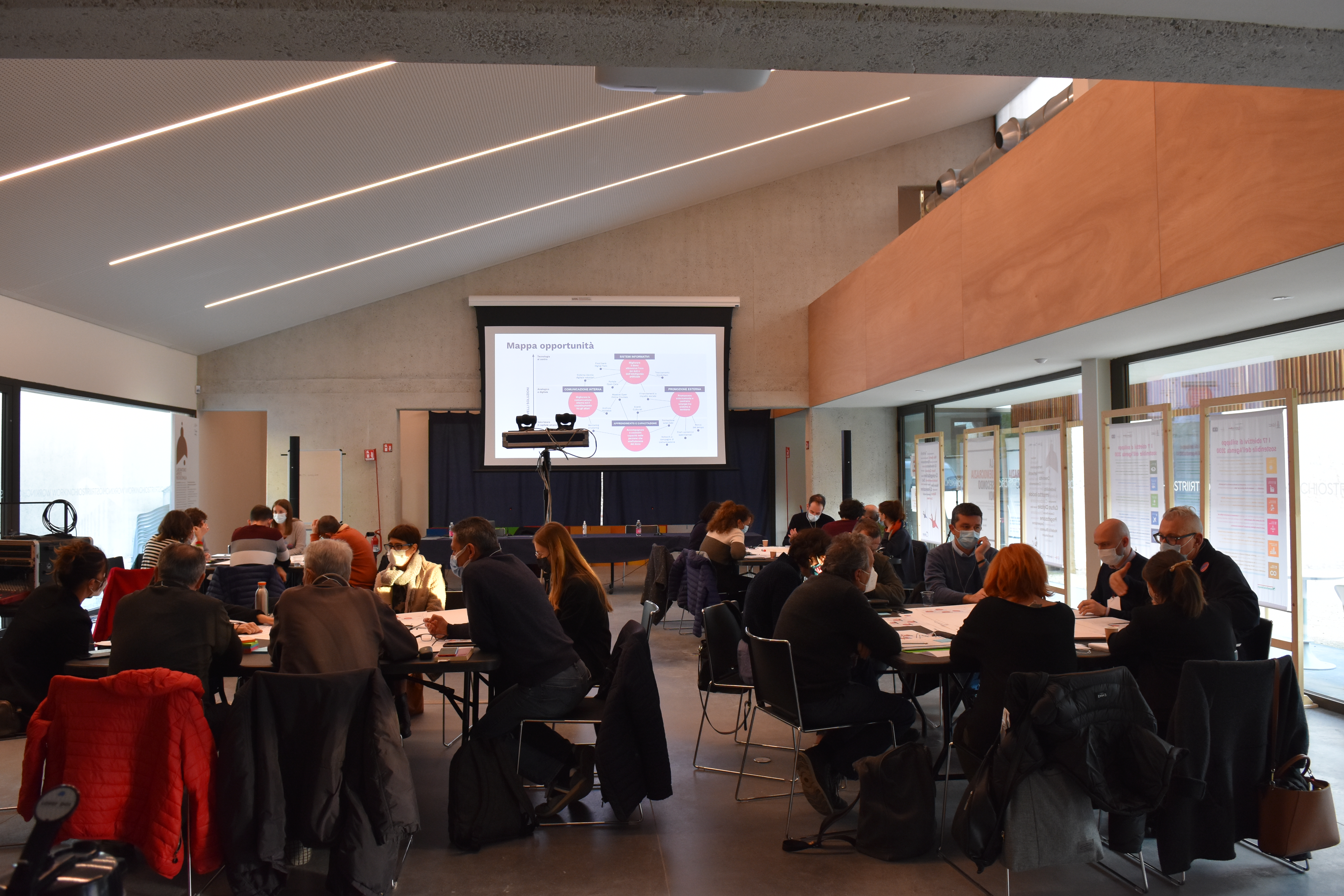
@Politecnico di Milano, Department of Design, 2021
Content licensed to the European Union.